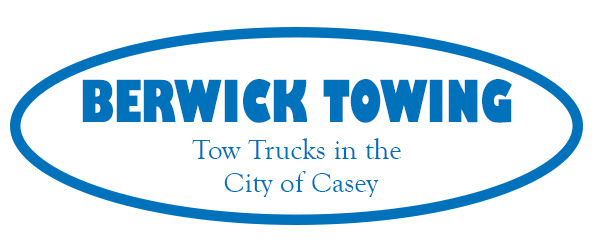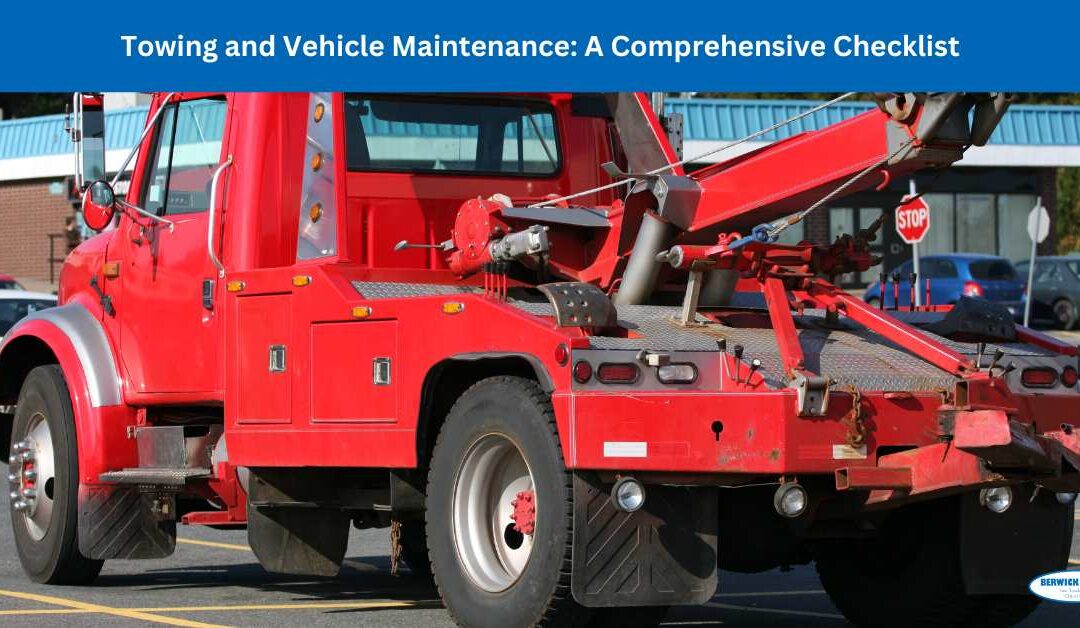Towing puts additional stress on both your tow vehicle and trailer, making proper maintenance essential for safety, reliability, and performance. Whether you’re towing for work, travel, or recreational purposes, having a solid maintenance checklist can ensure your vehicle is ready for the demands of the road.
1. Pre-Towing Vehicle Inspection
Before towing, conduct a thorough inspection of both the tow vehicle and trailer to identify potential issues that could compromise safety. Here’s what to check:
- Fluids: Verify levels of engine oil, transmission fluid, coolant, and brake fluid. Towing increases heat and strain on these systems, so top off or change fluids as needed.
- Battery: Check the battery for corrosion and ensure it’s fully charged. Towing draws more power, so a strong battery is essential.
- Belts and Hoses: Inspect all belts and hoses for signs of wear, cracks, or leaks. A broken belt or leaky hose can lead to engine overheating or power steering failure.
- Lights: Ensure all lights (headlights, brake lights, indicators) are functioning on both the tow vehicle and the trailer for visibility and communication on the road.
2. Tires and Wheel Alignment
Tires are critical for safe towing, as they bear the added weight and stress from the load. Proper tire maintenance and alignment are essential:
- Tire Pressure: Check and adjust tire pressure on both the tow vehicle and the trailer to the manufacturer’s recommended levels. Over- or under-inflated tires can lead to uneven wear or blowouts.
- Tire Condition: Look for signs of uneven wear, cracking, or bulges on the sidewalls. Replace any tires showing wear before towing.
- Spare Tires: Always have a spare tire for both the tow vehicle and the trailer, and ensure they’re in good condition.
- Wheel Alignment: Misaligned wheels can cause swaying and uneven tire wear, which can be dangerous under heavy loads. Get a wheel alignment check if you notice any pulling or drifting.
3. Braking System Check
Towing requires more stopping power, so maintaining your brakes is crucial. Braking system checks include:
- Brake Pads and Rotors: Inspect brake pads and rotors for wear. Towing adds extra pressure, so replace pads with 50% wear or more.
- Brake Fluid: Ensure the brake fluid is at the correct level, as towing generates more heat, which can lead to brake fade or failure.
- Trailer Brakes: If your trailer is equipped with brakes, test them before heading out. Make sure the brake controller in the tow vehicle is correctly calibrated.
4. Cooling System
Towing can cause the engine to run hotter, making an efficient cooling system essential. To avoid overheating:
- Coolant Level: Check and top off the coolant level. If it’s been a while since the last flush, consider a coolant change.
- Radiator: Inspect the radiator for debris, dirt, or damage that could affect airflow. Clean the radiator fins if necessary.
- Fans and Thermostat: Ensure the fan and thermostat are working properly to regulate engine temperature effectively.
5. Trailer Hitch and Coupling
The hitch and coupling secure the trailer to the tow vehicle. Proper inspection ensures a safe connection:
- Hitch Condition: Check the hitch for rust, cracks, or wear. Replace any compromised parts.
- Coupler and Safety Chains: Inspect the coupler and ensure it’s compatible with the hitch ball. Secure the safety chains to prevent trailer detachment if the hitch fails.
- Weight Distribution Hitch (if applicable): If using a weight distribution hitch, verify it’s properly set up and tightened to avoid sway or sagging.
6. Electrical System and Wiring
Towing requires a functional electrical connection between the tow vehicle and the trailer to operate lights and trailer brakes. Inspecting the electrical system ensures safe and legal towing:
- Wiring Connections: Inspect wiring connectors and make sure they’re secure and free of corrosion.
- Trailer Lights: Test all trailer lights (brake lights, turn signals, tail lights) to ensure visibility.
- Brake Controller: If towing a trailer with brakes, ensure the brake controller is correctly adjusted to activate trailer brakes in sync with the tow vehicle.
7. Suspension and Drivetrain
Towing places additional strain on your vehicle’s suspension and drivetrain. Regular inspections and adjustments can extend their lifespan:
- Suspension Components: Inspect shocks, struts, and springs for signs of wear. These components help support the added weight when towing.
- Drive Shaft and U-Joints: Check for play or wear in the drive shaft and U-joints, especially if you’re towing with a rear-wheel-drive vehicle.
- Transmission: Towing can generate excessive heat, leading to transmission wear. Regular transmission fluid changes and using an external transmission cooler can prevent overheating.
8. Cargo and Load Security
Proper load management is essential to prevent shifting and reduce strain on the tow vehicle. Make sure that:
- Load is Balanced: Follow the 60/40 rule for weight distribution, with 60% of the load near the front and 40% toward the back.
- Cargo is Secured: Use straps, nets, or chains to secure all items. Loose cargo can shift, affecting handling and stability.
- Tongue Weight: Ensure the tongue weight is about 10-15% of the trailer’s total weight for balanced towing.
9. Pre-Trip Testing and Safety Check
Before setting off, do a final check to confirm everything is in working order:
- Test Drive: Do a short drive to check braking, steering, and stability with the loaded trailer.
- Final Walk-Around: Walk around the entire setup to double-check connections, lights, tire pressure, and cargo security.
- Emergency Kit: Ensure your emergency kit includes a spare tire, jack, flashlight, extra fluids, and basic tools.
10. Post-Towing Maintenance
After a towing trip, inspect your vehicle and trailer for any damage or wear that may have occurred:
- Fluid Check: Inspect oil, coolant, and transmission fluid levels and top off if necessary.
- Tire Inspection: Check tires for new wear patterns or any signs of strain.
- Brake Condition: Examine the brake pads and rotors, as towing can lead to faster wear.
- Suspension and Alignment: Check for any signs of suspension strain or misalignment, especially if you traveled on rough or uneven roads.
Final Thoughts
Regular maintenance before, during, and after towing trips not only ensures safety but also prolongs the life of your vehicle and trailer. Following a towing maintenance checklist helps prevent breakdowns, increases efficiency, and enhances safety on the road.
If you are in Berwick, Victoria 3806, Australia, and looking for a car removal service, this is the best way to visit us.
Contact Us
Berwick Towing & Transport
27B William Rd
Berwick VIC 3806
(03) 7035 7815
www..berwick-towing.com.au/

